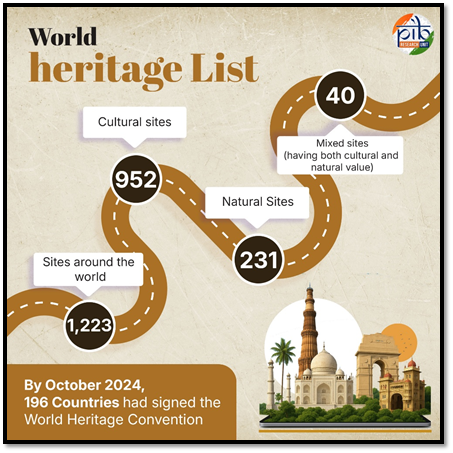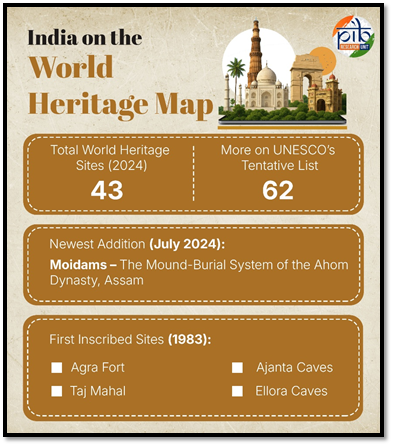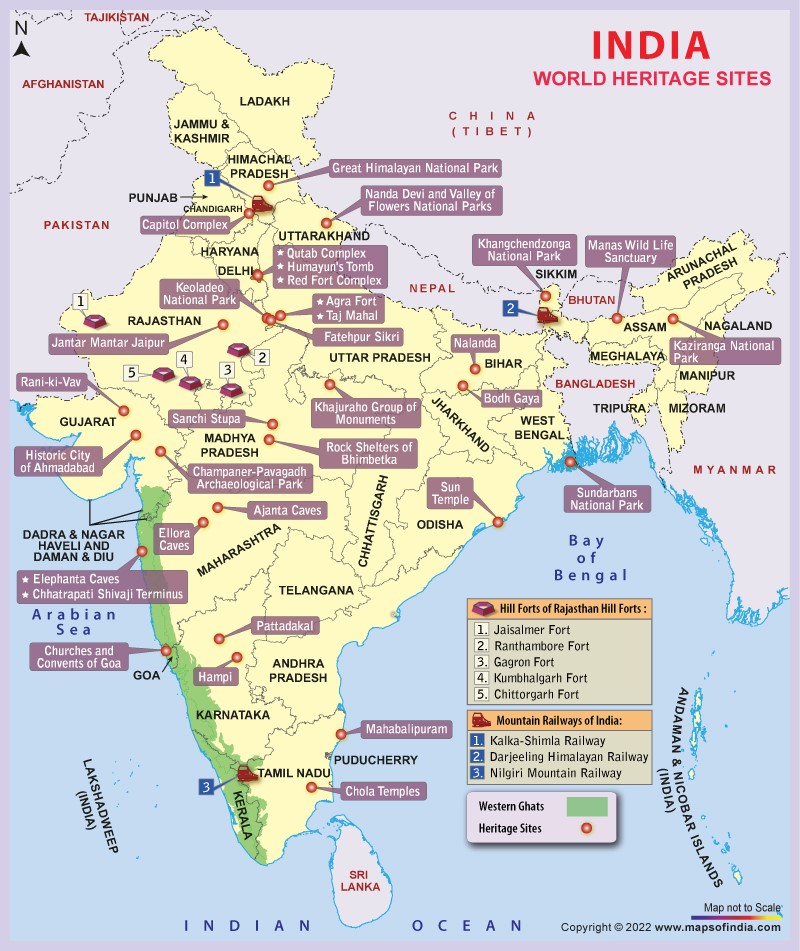7667766266
enquiry@shankarias.in
Mains Syllabus: GS I - Indian Heritage and Culture.
World Heritage Day is celebrated every year on 18th April to honor and protect cultural and natural heritage.

In July 2024, “Moidams: The Mound-Burial System of the Ahom Dynasty” from Assam was recognized as the 43rd site.


In 2024, the Government granted classical language status to Assamese, Marathi, Pali, Prakrit, and Bengali, raising the total to 11 classical Indian languages.